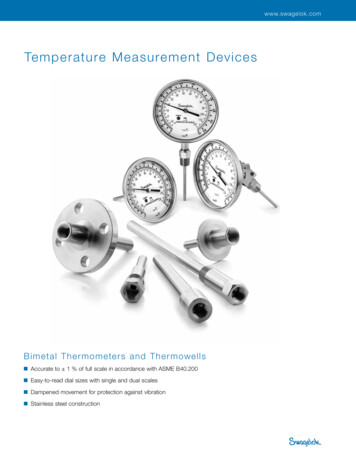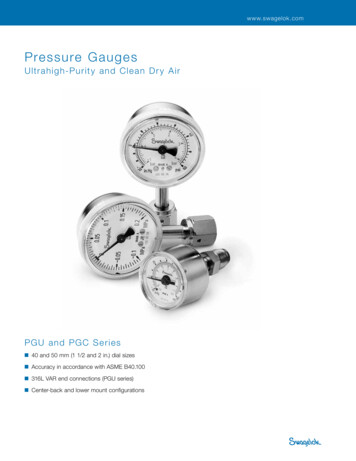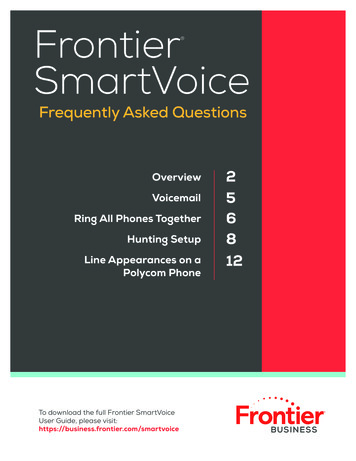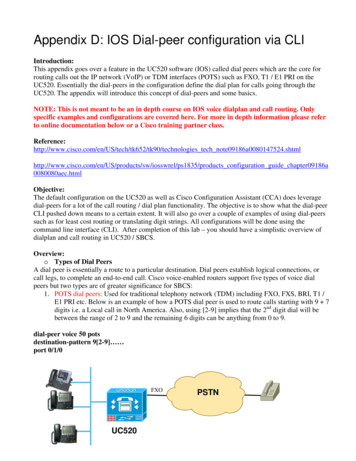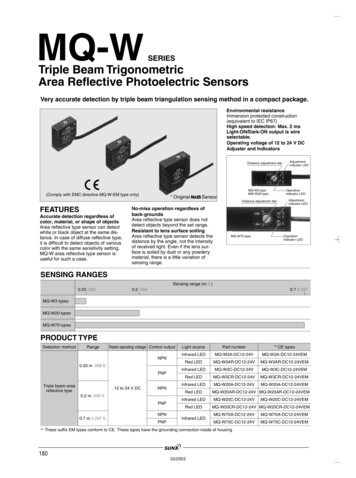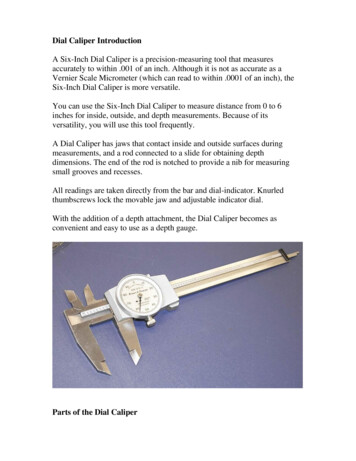
Transcription
Dial Caliper IntroductionA Six-Inch Dial Caliper is a precision-measuring tool that measuresaccurately to within .001 of an inch. Although it is not as accurate as aVernier Scale Micrometer (which can read to within .0001 of an inch), theSix-Inch Dial Caliper is more versatile.You can use the Six-Inch Dial Caliper to measure distance from 0 to 6inches for inside, outside, and depth measurements. Because of itsversatility, you will use this tool frequently.A Dial Caliper has jaws that contact inside and outside surfaces duringmeasurements, and a rod connected to a slide for obtaining depthdimensions. The end of the rod is notched to provide a nib for measuringsmall grooves and recesses.All readings are taken directly from the bar and dial-indicator. Knurledthumbscrews lock the movable jaw and adjustable indicator dial.With the addition of a depth attachment, the Dial Caliper becomes asconvenient and easy to use as a depth gauge.Parts of the Dial Caliper
The major parts of the Dial Caliper are labeled on the diagram and describedbelow:A. Bar: A scale with graduations in inches and tenths of an inch.B. Fixed Jaws: Located at the zero end of the scale on the bar, thefixed jaws function as the starting points for inside and outsidemeasurements.C. Moveable Jaws: Can be slid along the bar in order to take insideand outside readings.D. Dial: The dial hand makes one complete revolution for each .10inch of movement. The face is divided into increments of .001.E. Moveable Jaw Clamp Screw: This locks the movable jaws intoplace.F. Adjusting Nut: This is used to adjust to the dial so that it registerszero when the caliper jaws are closed.G. Depth Bar: Used to take depth measurements of holes, steps, andrecesses.Reading the Dial and BarOnce you have placed the jaws in the space or around the part that you wantto measure, you need to read both the bar and the dial to get a reading.The bar is in increments of inches and tenths. As you slide the bar to theright, new increments appear from under the dial. In Figure 4- 2, the readingis something over .700”.
One full rotation of the dial (zero to zero) represents a movement of .100inch. The dial reads in thousandths and ten thousandths.In the above picture, the last line visible on the bar is .700 and the dial reads.050, so the reading on this measurement is .750.
In this example, the bar reads 3 tenths and the dial reads 12 thousandths, sothe reading is:.300 .012 .312”
Skill Check 1 - Dial CaliperRead the bar and dial in each photo below, then record your reading in thespace provided. When you are done, check your answers with the answerkey following this Skill Check.1. This reading is : inches.
2. This reading is : inches.
1. 3. 3. This reading is : inches.2. 3. 4. This reading is : inches.3. 3. 5. This reading is : inches.
4. 3. 6. This reading is : inches.5. 3. 7. This reading is : inches.6. 3. 8. This reading is : inches.
7. 3. 9. This reading is : inches.8. 3. 10. This reading is : inches.
Skill Check 1 AnswersBelow are the answers to the previous exercise. How did you do? If youmissed more than 3 you may want to do a little more practice reading thedial. If you got them all right, congratulations!1. .9662. .3573. .6654. .4855. 1.0036. 1.3217. 1.1008. .9279. 1.49010. 1.173
Vernier Scale Micrometer (which can read to within .0001 of an inch), the Six-Inch Dial Caliper is more versatile. You can use the Six-Inch Dial Caliper to measure distance from 0 to 6 inches for inside, outside, and depth measurements. Because of its versatility, you will use this tool frequently. A Dial Caliper has jaws that contact inside and outside surfaces during measurements, and a rod .


